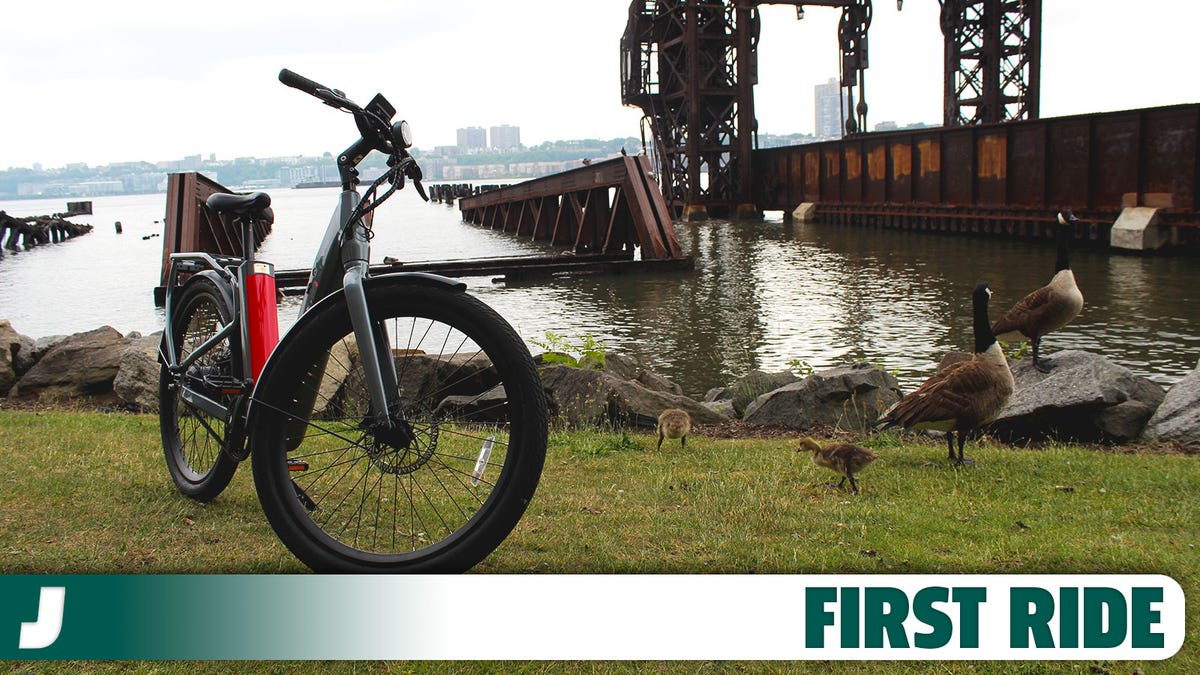If you’re in the market for an electric bike, there are probably a few important parameters you’re considering. Things like range, price and usability are all important when dropping a few thousand bucks on a new bike. The NIU BQi-C3 Pro E-Bike is great at one of these, but it sadly struggles a little on the other two.
Full Disclosure: NIU shipped one of its new BQi-C3 Pro e-bikes to Manhattan for me to test out on busy streets and the city’s bike paths.
Catchy Name, What Is It?

Built by Chinese mobility specialists NIU, the BQi-C3 Pro is an interesting proposition in the world of electric bikes. The bike is built around an aluminum frame with a step-through design that can be ordered in black, white or gray. Each model comes with a red accent in the middle that houses not one but two batteries, which are both certified to UL2849 standards. These give the bike 920 WH of electric power, which runs a 750 W Bafang hub motor mounted in the rear wheel.
Instead of a traditional chain, the BQi-C3 Pro comes with a carbon belt to connect the rear wheel and the pedals. These systems are, traditionally, lower maintenance than a regular chain drive, and can also be cleaner to run. At the front and rear of the bike, you’ll find a set of integrated lights, which are powered by the bike’s batteries, and there’s a 3.5-inch screen mounted to the handlebars and a set of controls to the left of this. The cost of all this? A cool $2,199 MSRP (At the time of writing, there’s $900 discount on the bike and you can pick one up for $1,299).
Buy the NIU BQi-C3 Pro now: Amazon | Best Buy | NIU Store
For that, NIU will ship you a bike in a box and, when it arrives, it’s not quite ready to ride so there is a bit of assembly required. Thankfully, it’s a pretty easy process and NIU includes all the tools you’ll need with the bike – except a pump for the tires. The process of building the bike involves fixing the front wheel in place with a quick-release screw and attaching the handlebars to the frame via four bolts. Finally, you just twist the pedals into place – it’s a very simple unboxing process, I assure you.
As well as the bike and a toolkit, the enormous box contains the charger, which comes with two outlets so you can top up both of the bike’s batteries simultaneously. There’s also a set of keys that let you remove the batteries as desired, and a manual to show you the ropes of operating this bike. Once all that’s out, you just need to plug it in and get ready to ride.
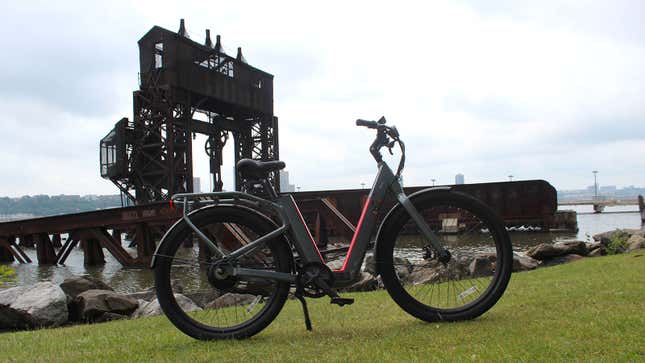
So, How Does It Ride?
After waiting about six hours for the batteries to fill up, I was ready to hit the streets. There are three modes of pedal assist available on the bike, and you can also ride it with no electrical assistance at all. But it is a heavy bike with no gearing, so I wouldn’t recommend doing this unless your battery is drained and you need to make it home.

With the motor switched on, this bike is fast. It’s a category three e-bike, which means that in pedal assist mode it will reach a top speed of 28 mph and it does this with ease. In the third and highest assistance setting, it flies around town and along pristine pathways at a rate that puts any lycra-clad road biker to shame. But, when you hit the top speed, the lack of gearing on the bike does leave you feeling a bit silly while pedaling. You have to pedal to keep the motor engaged, so your legs simply spin frantically with little to no resistance from the bike. I found this phenomenon to be the same in level two as well, but at a slightly lower speed – around 25 mph.
While this is fine, and means that you get from A to B very quickly on the NIU, it does leave it feeling much less like a bike that you actually ride. Pedaling feels like a formality and there doesn’t appear to be any connection between the amount of effort you put in and the speed you go – instead, it’s like turning the crank just flicks on a switch that sets off the motor.
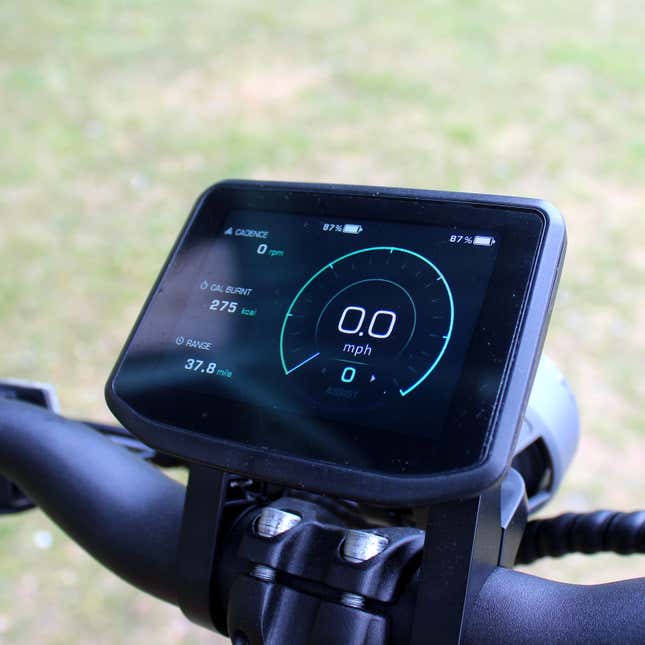
The feeling is similar in the bike’s lowest setting, but at this level of assistance you at least feel like the work you’re putting in is helping you get somewhere. If you think you might like to cruise around like this and only move up a level when you hit a hill or other tricky section, a word of warning for you: the jump between the first level of assist and the second is enormous. It almost feels like there could be another setting in between the two, and means there’s no real option in between “it’s sometimes a bit too much effort” and “I’m not really doing anything.”
While we’re talking grievances, it’s a shame that the bike is only fitted with a set of mechanical disc brakes. Out of the box, these are great and bring you to a stop abruptly – even at the higher speeds this bike can reach. But cables stretch, meaning that mechanical brakes aren’t as reliable in the long-run as their hydraulic counterparts. And with a starting price above $2,000, I would expect hydraulic brakes to come as standard.
When you are cruising around town, the bike is nice. The saddle is comfortable and despite its lack of suspension, the ride remains pretty smooth thanks to those chunkier tires, which even add a layer of kevlar puncture protection. The front and rear of the NIU are equipped with 27.5 inch by 2.4 inch rubber, which does a good job at soaking up most pumps in New York’s roads, but be prepared for a jolt if you bounce over larger ruts at full whack.
Buy the NIU BQi-C3 Pro now: Amazon | Best Buy | NIU Store
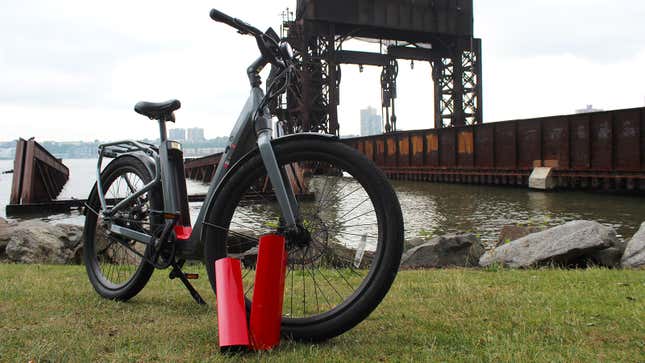
But What About The Range From Those Two Batteries?
Because the bike has two 460 Wh batteries, you can keep rolling for mile after mile. Where most bikes I test will manage about a week of casual use (think cycling to the office every day, occasional short trips and at least one longer ride out to Brooklyn for band practice), the NIU could easily handle double that. Yes, that varies depending on the assistance setting, but after roaming around in Level Two for a while, I found myself hitting 60 miles traveled before I needed to start thinking about charging, which is impressive.
What’s cool about the bike is that despite its batteries being separate units, they still drain equally and you can see the charge level on each highlighted on the display. That screen also shows your speed, cadence, distance traveled and average speed. It’s nice having that information at hand, but the screen could definitely be a few nits brighter.
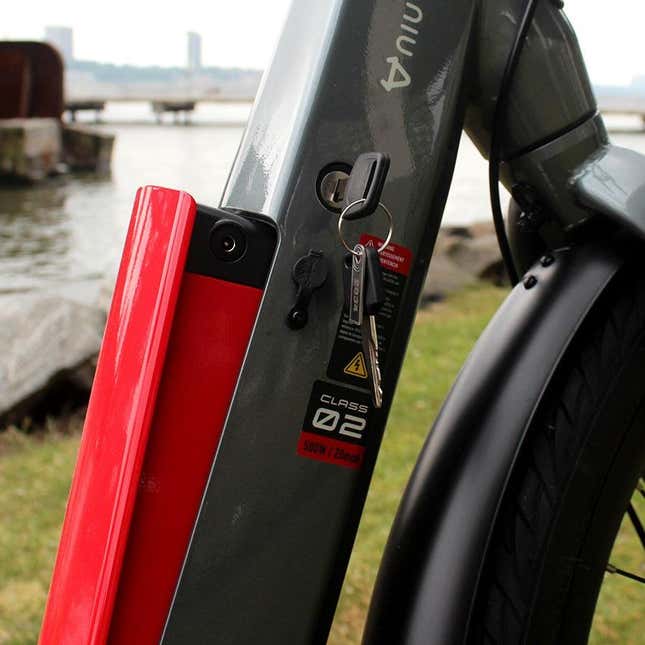
But back to the batteries, it’s interesting that while they drain simultaneously, you do have to plug each one in individually to top them back up. When I plugged in both batteries at 20 percent, I found that a five hour charge was enough to get them back up to 100 percent again.
That dual battery setup is cool and means you won’t have to plug in as often, but it does come with its downsides. In most e-bikes, the battery is the heaviest part, so doubling the number of batteries really piles on the pounds. In fact, the NIU bike with both cells installed clocks in at 70.5 pounds, and the batteries alone account for 12 of those pounds. And that’s a lot.
Taking just one out would reduce that mass, making the NIU easier to maneuver when you aren’t riding. And, it would still leave you with an acceptable 30-plus-mile range. And, after all, how many people are regularly taking their city-focused e-bikes on rides much longer than this?
As well as being the heaviest part of a bike, the batteries are also some of the most costly components in an e-bike. That’s why this model is priced above $2,000 whereas similarly specced single-battery models clock in closer to $1,500.
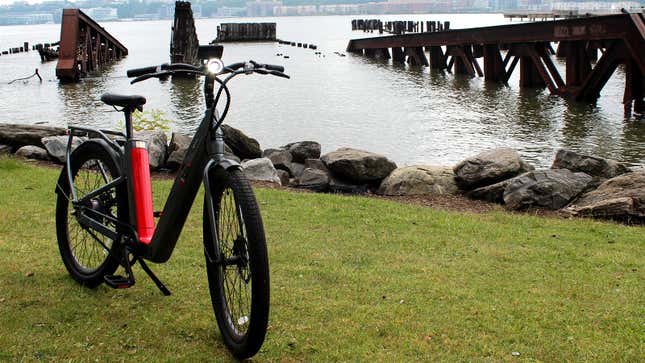
So, Would You Buy It?
On paper, the NIU is an impressive bike. Enough battery power for a 70-mile range, that powerful Bafang motor and an easy to maintain belt-drive are all attractive features in a bike. What’s more, I love the look of this thing. The frame is simple and those red panels surrounding the batteries really pop – it’s a handsome bike. But after spending time with it, I found myself questioning some of the choices NIU made.
If NIU could sell me a bike with one less battery, a few pounds taken from the weight and a cut in the price, I could really be tempted by this bike. It looks sleek and rides nicely. But its weight and price are issues for many people.
But, this is just NIU’s second e-bike, so I’m hopeful that it’s a formula that will be refined on models to come, as there’s definitely something here. But as it stands, drawbacks like a dim screen, mediocre brakes and all that extra weight mean that the cons do slightly overshadow that impressive range.

